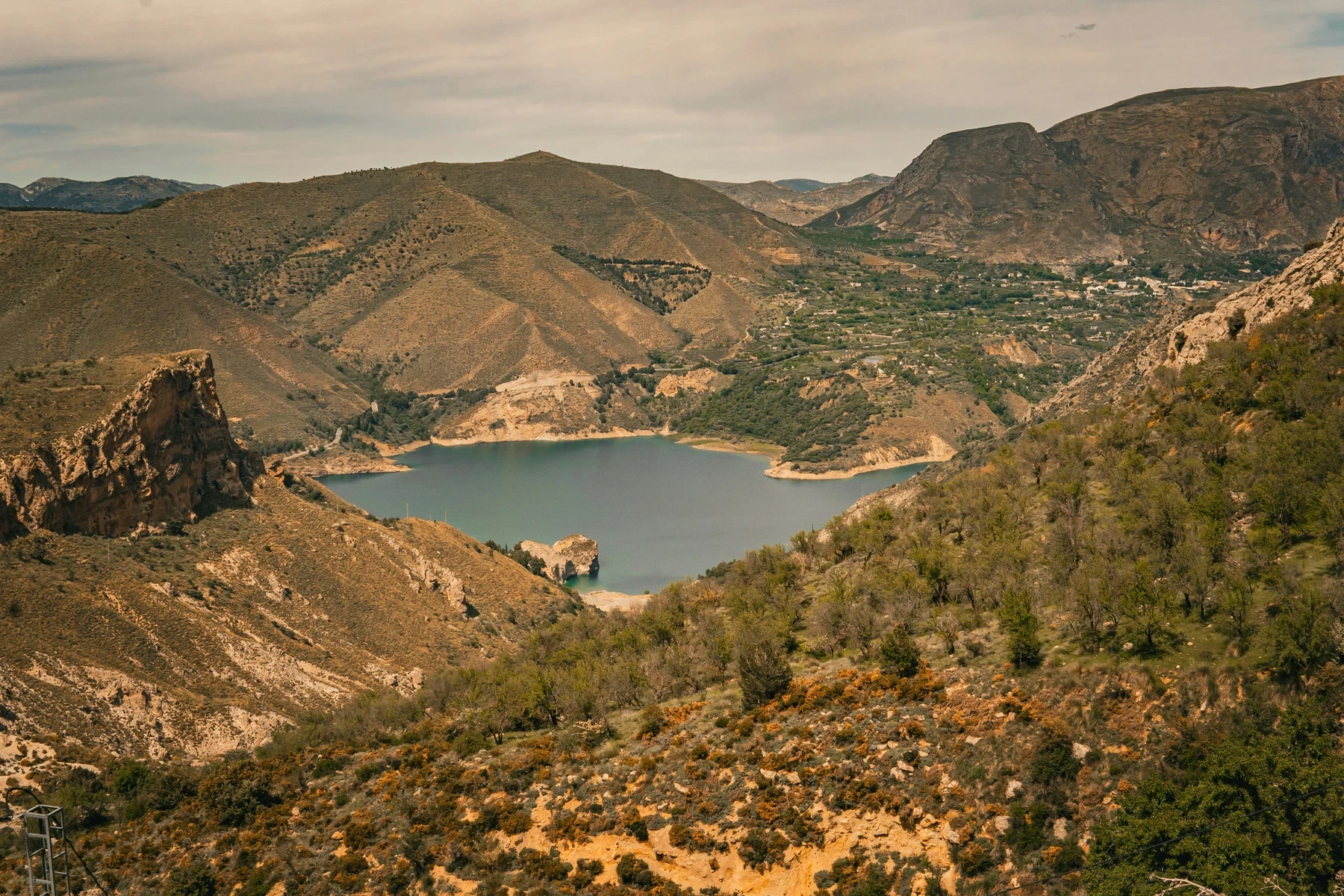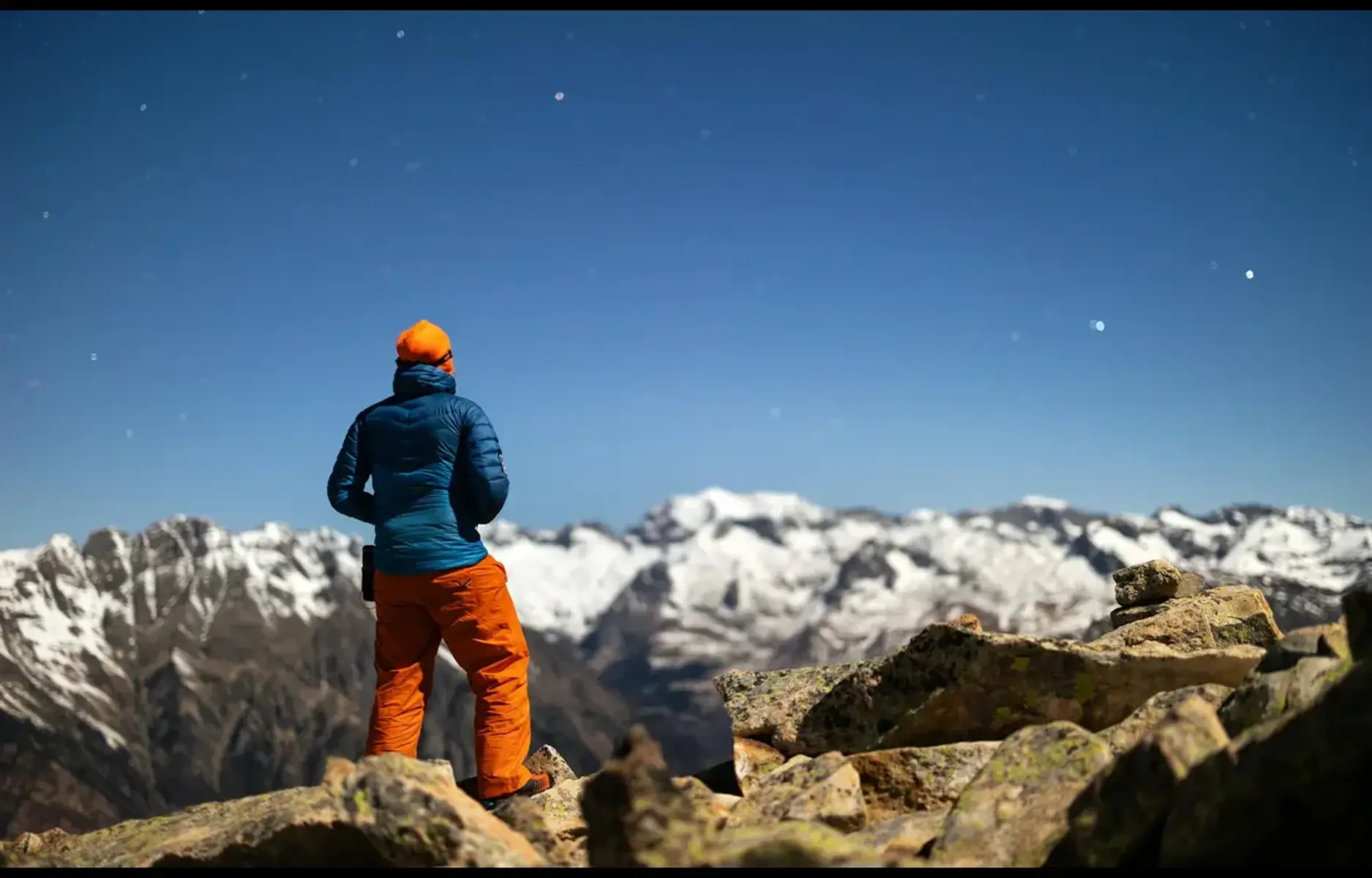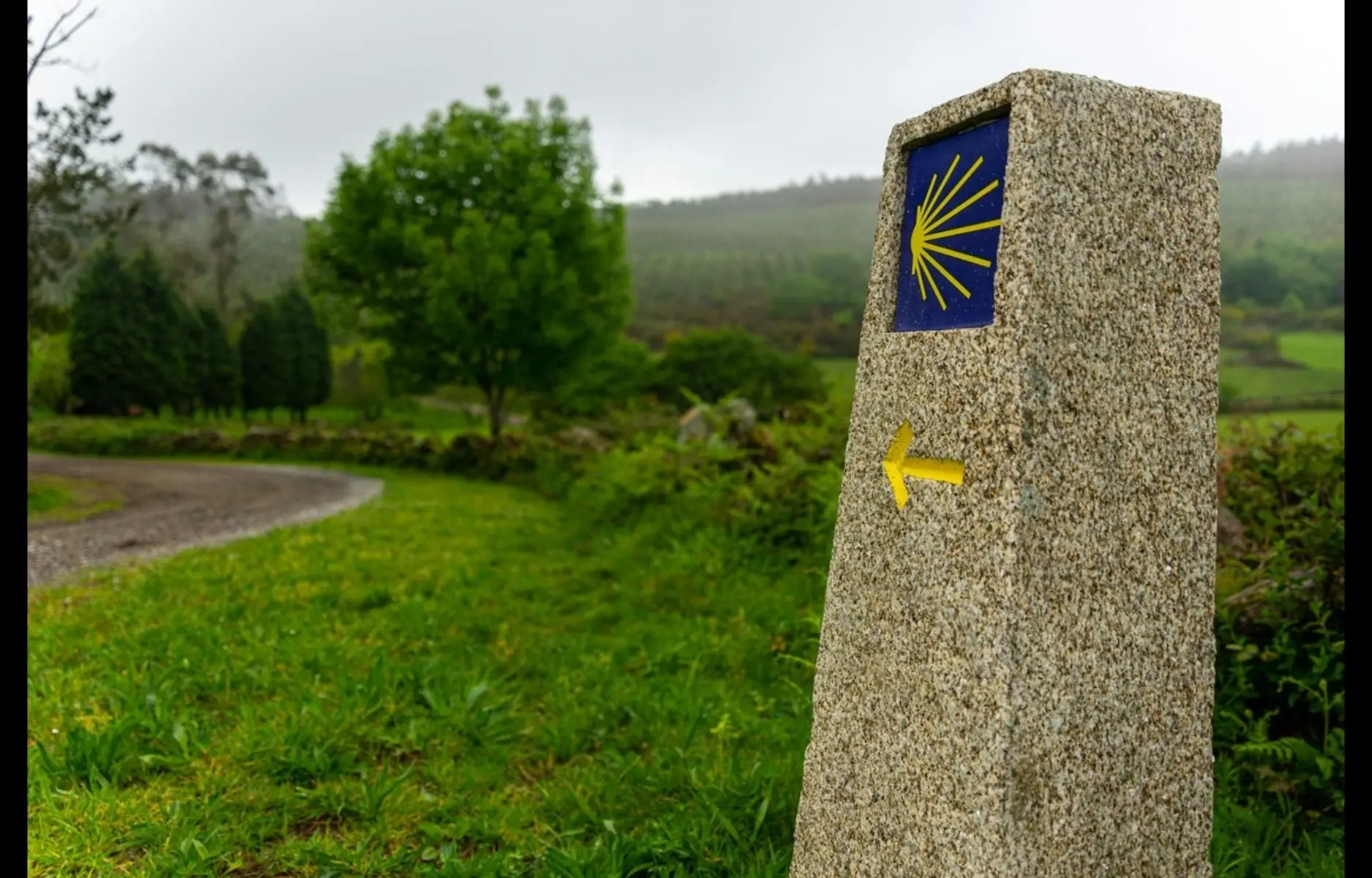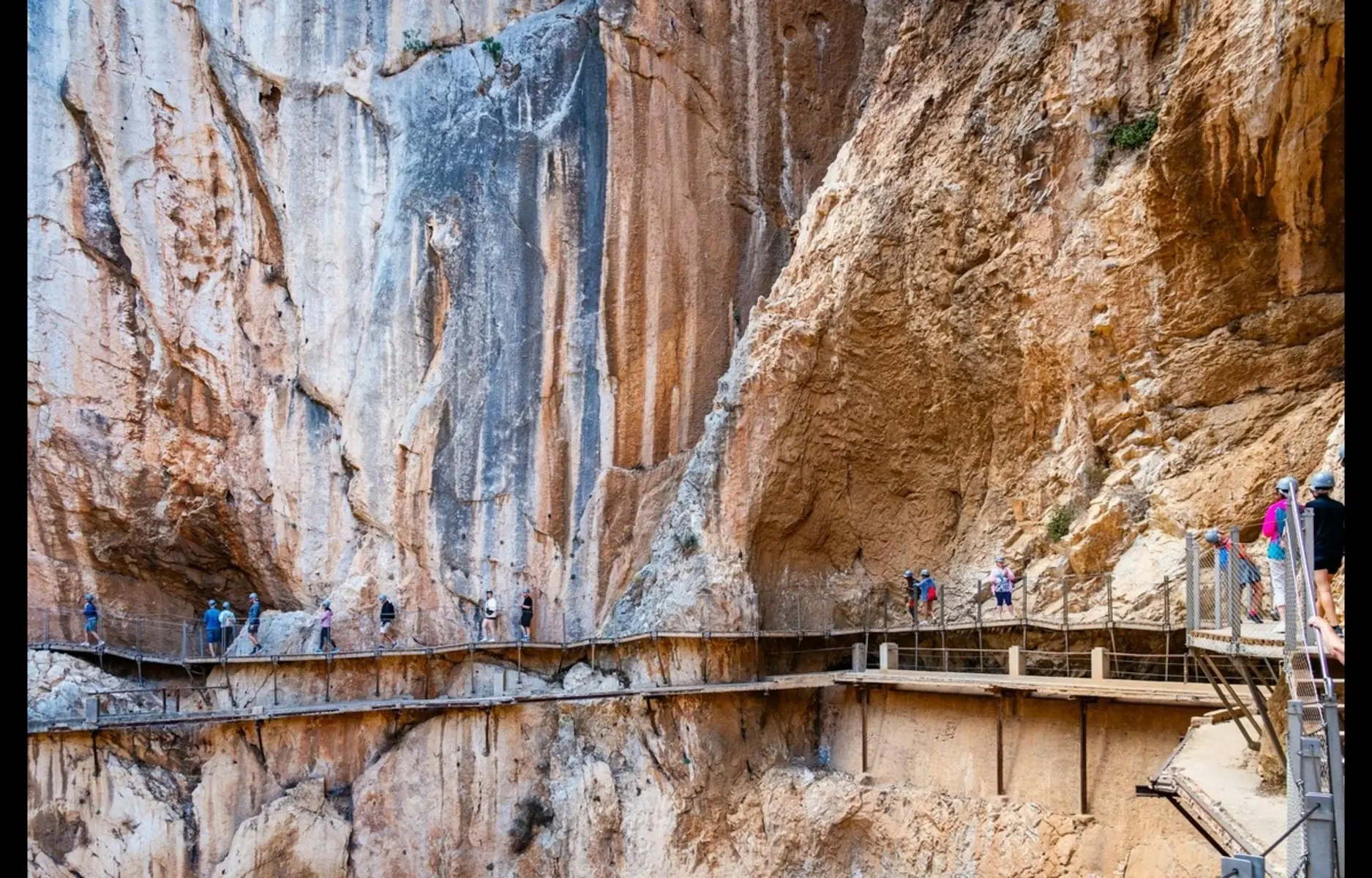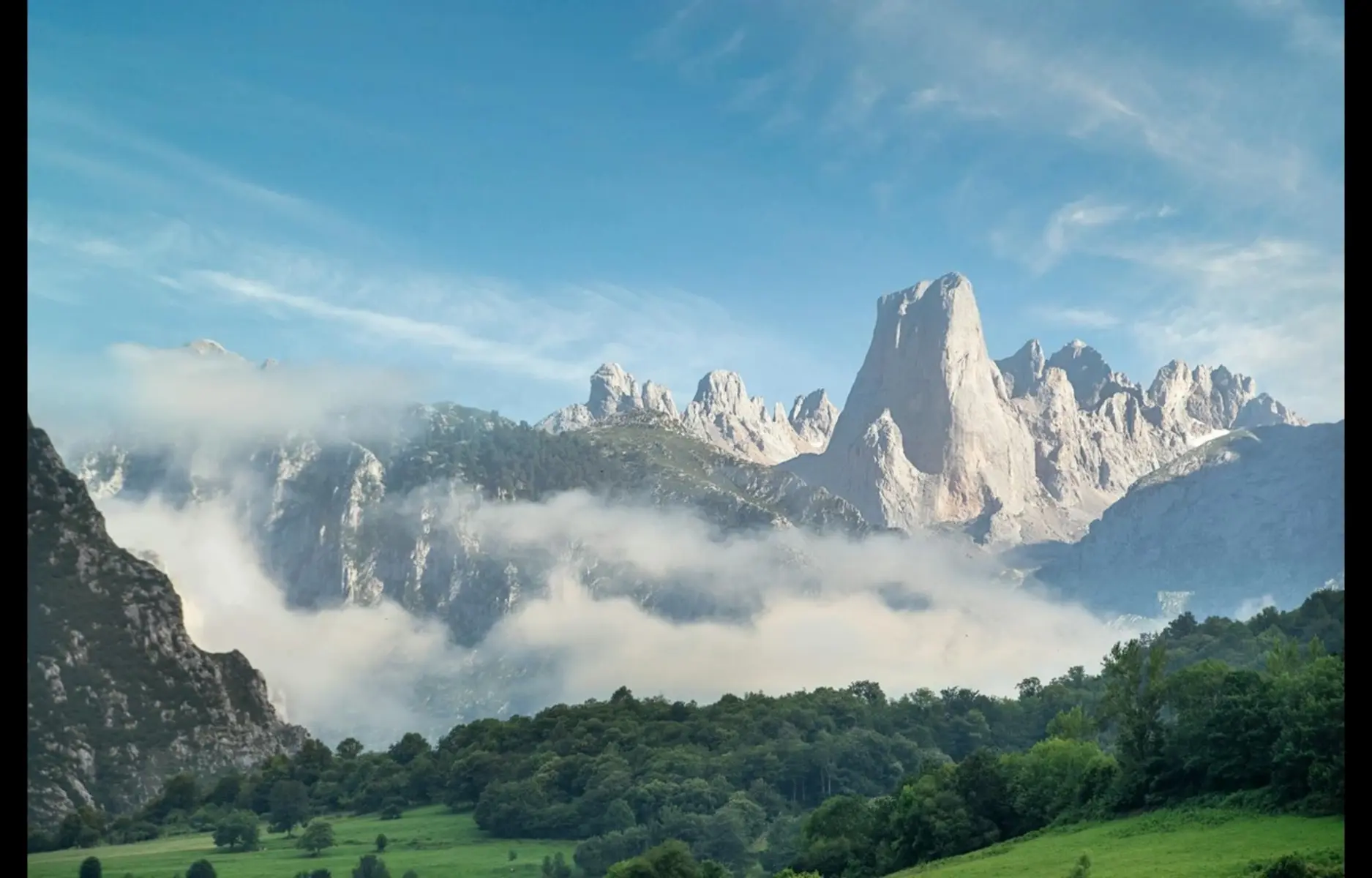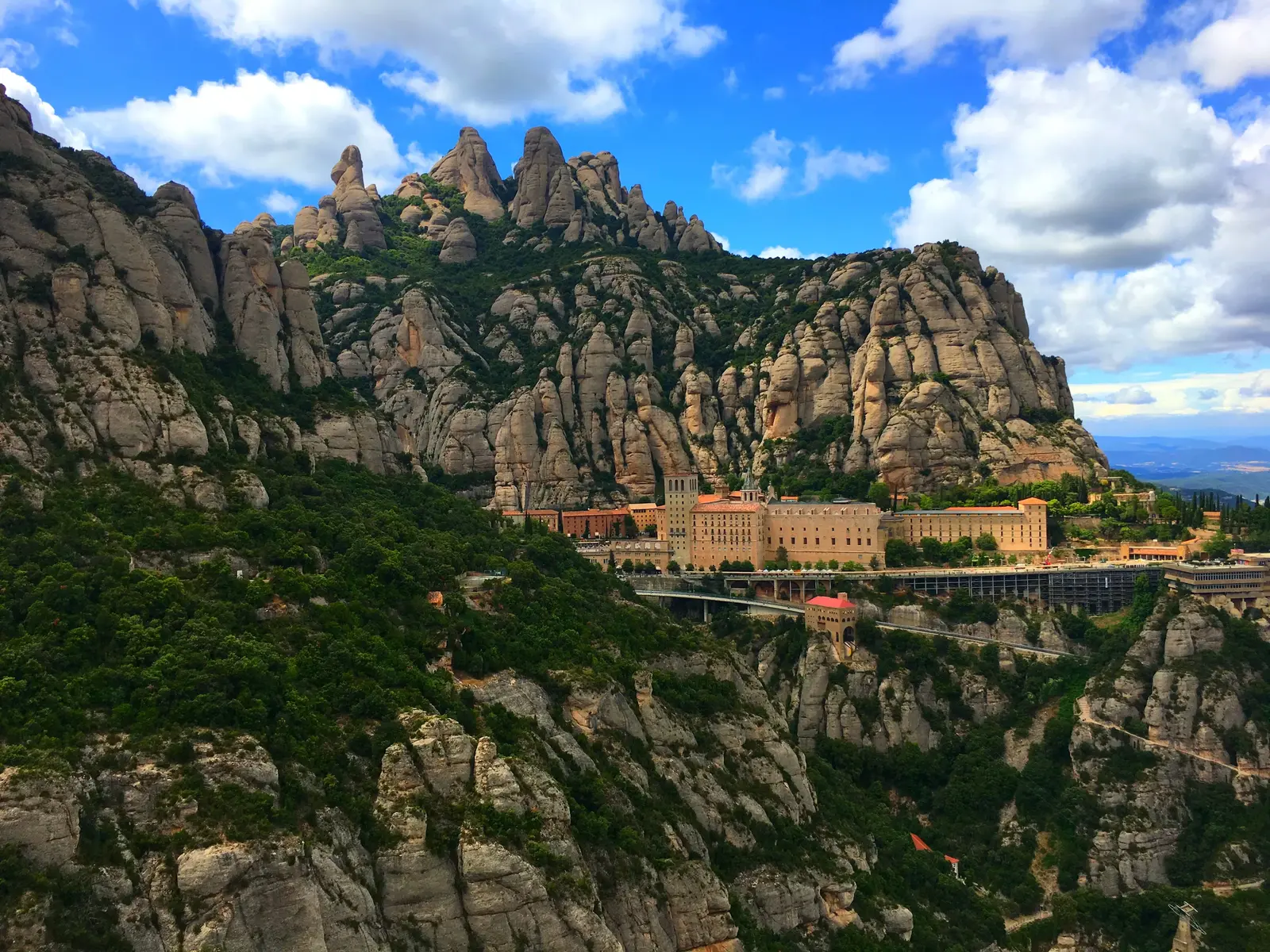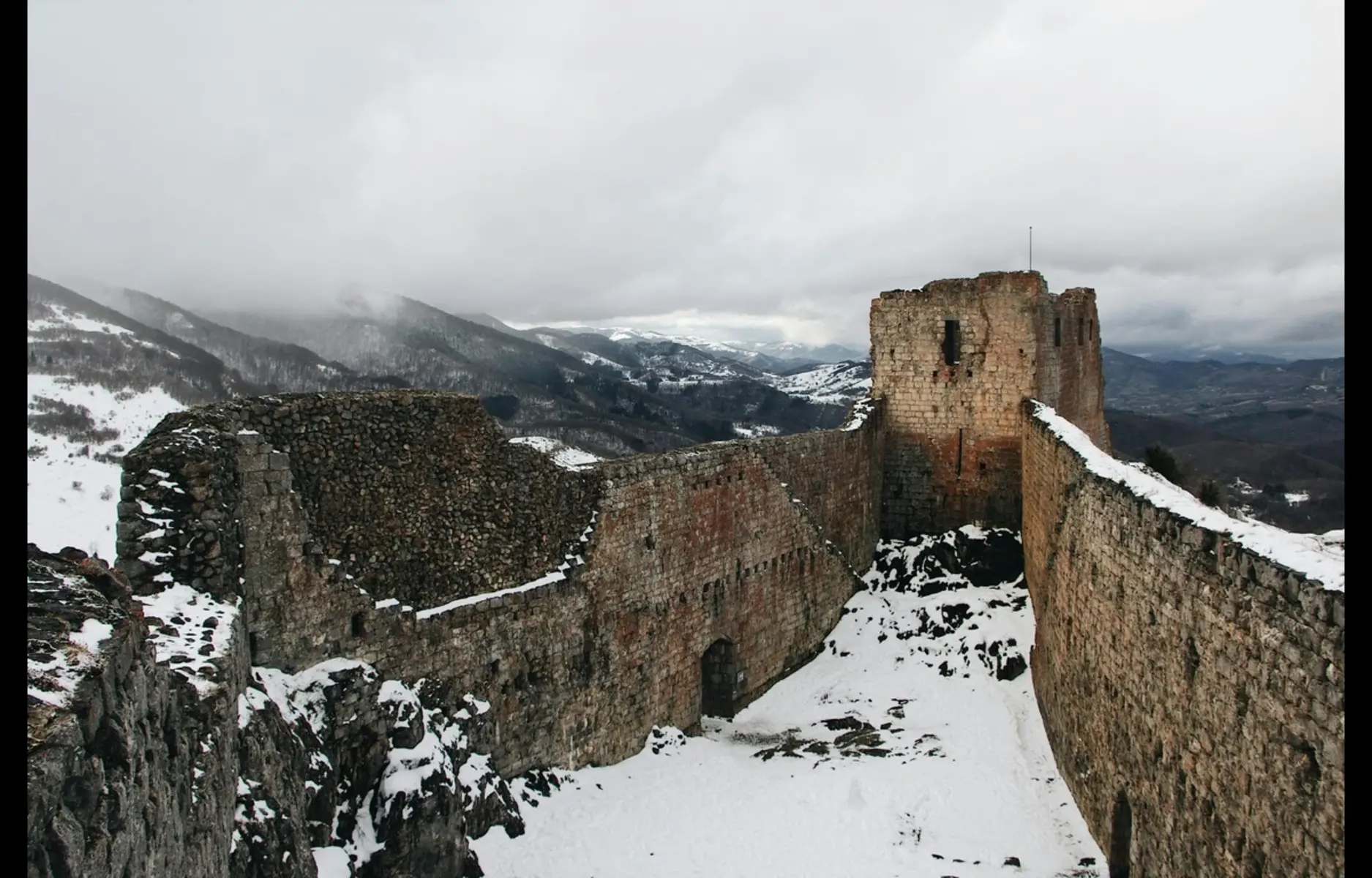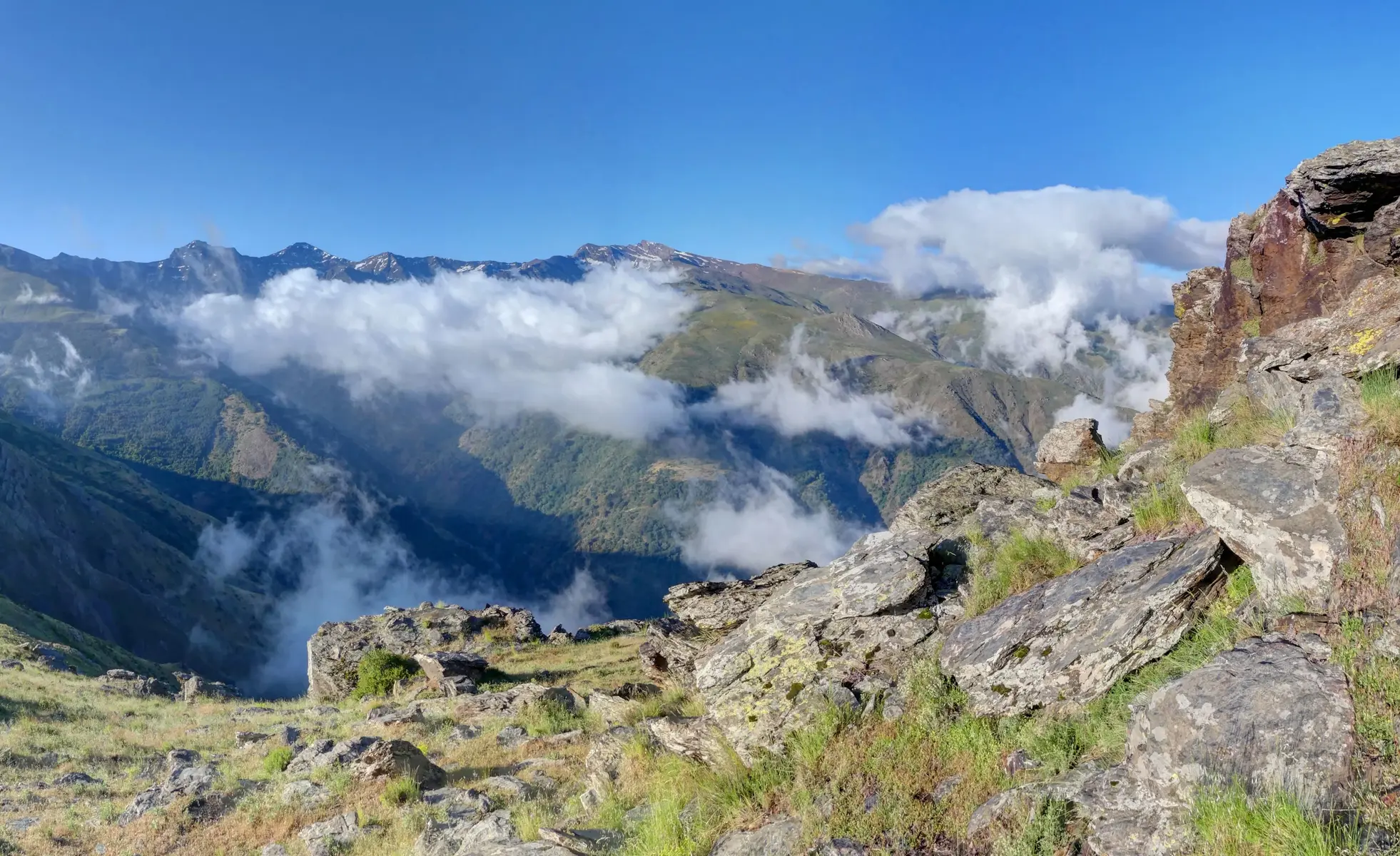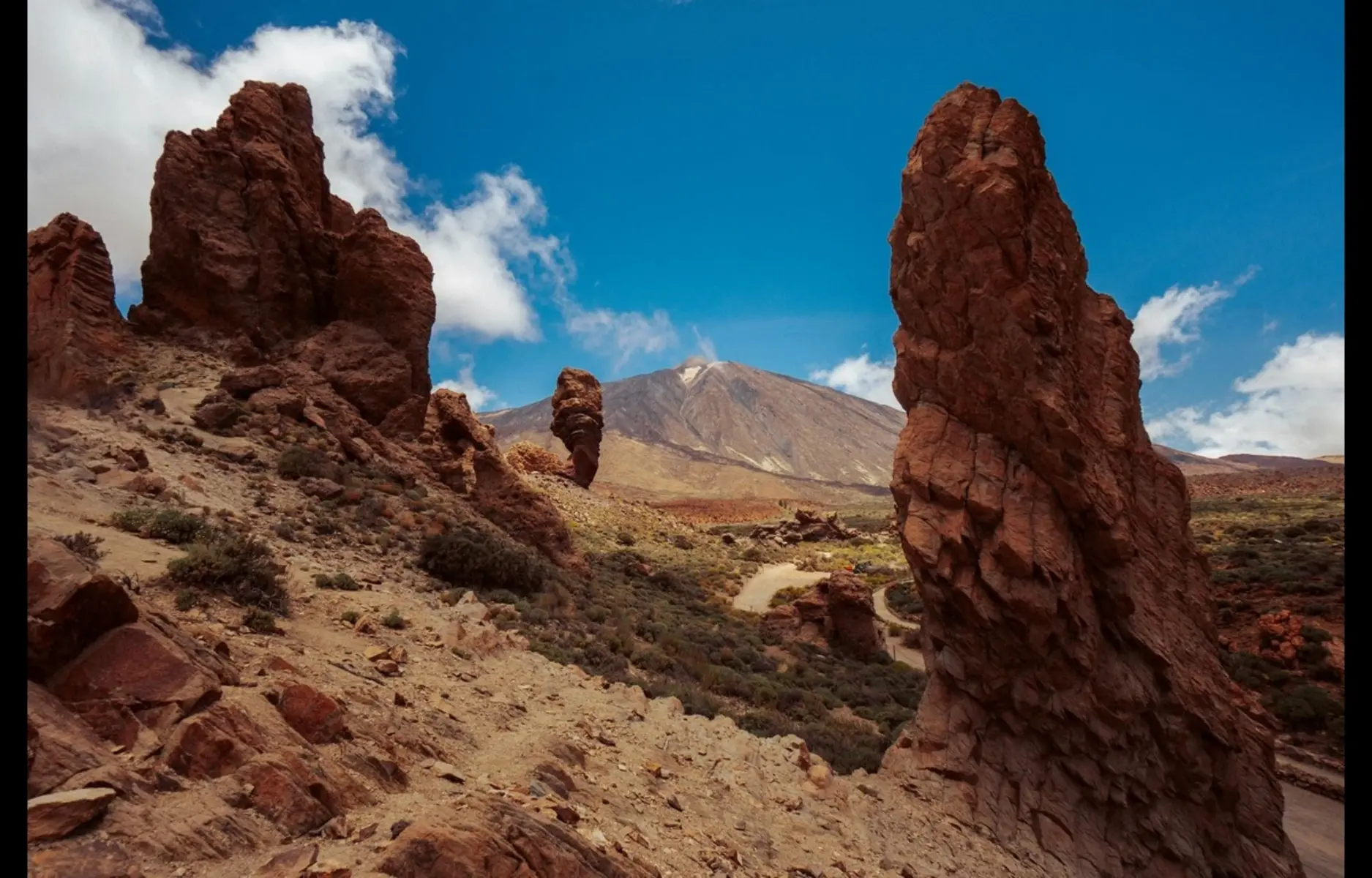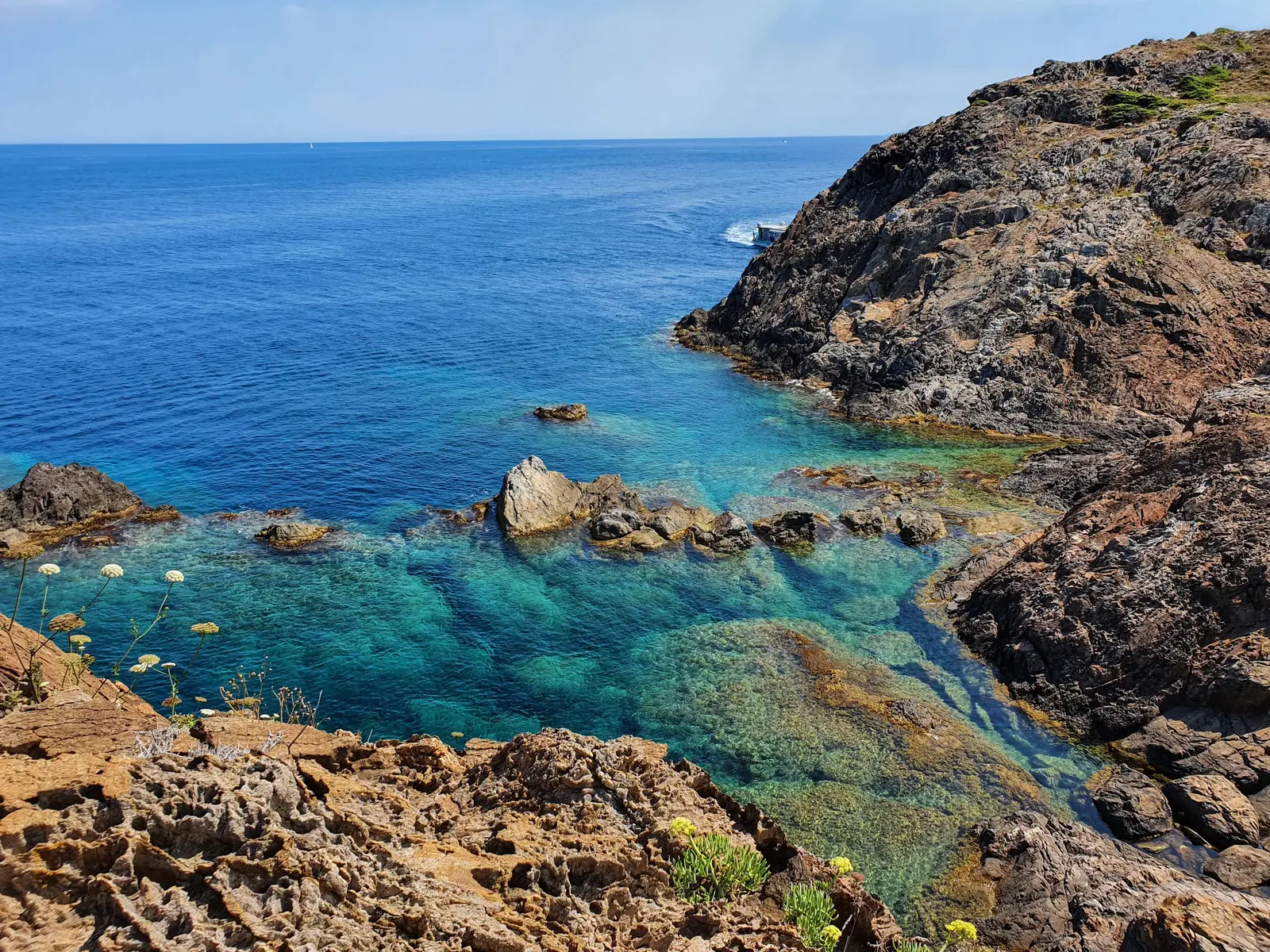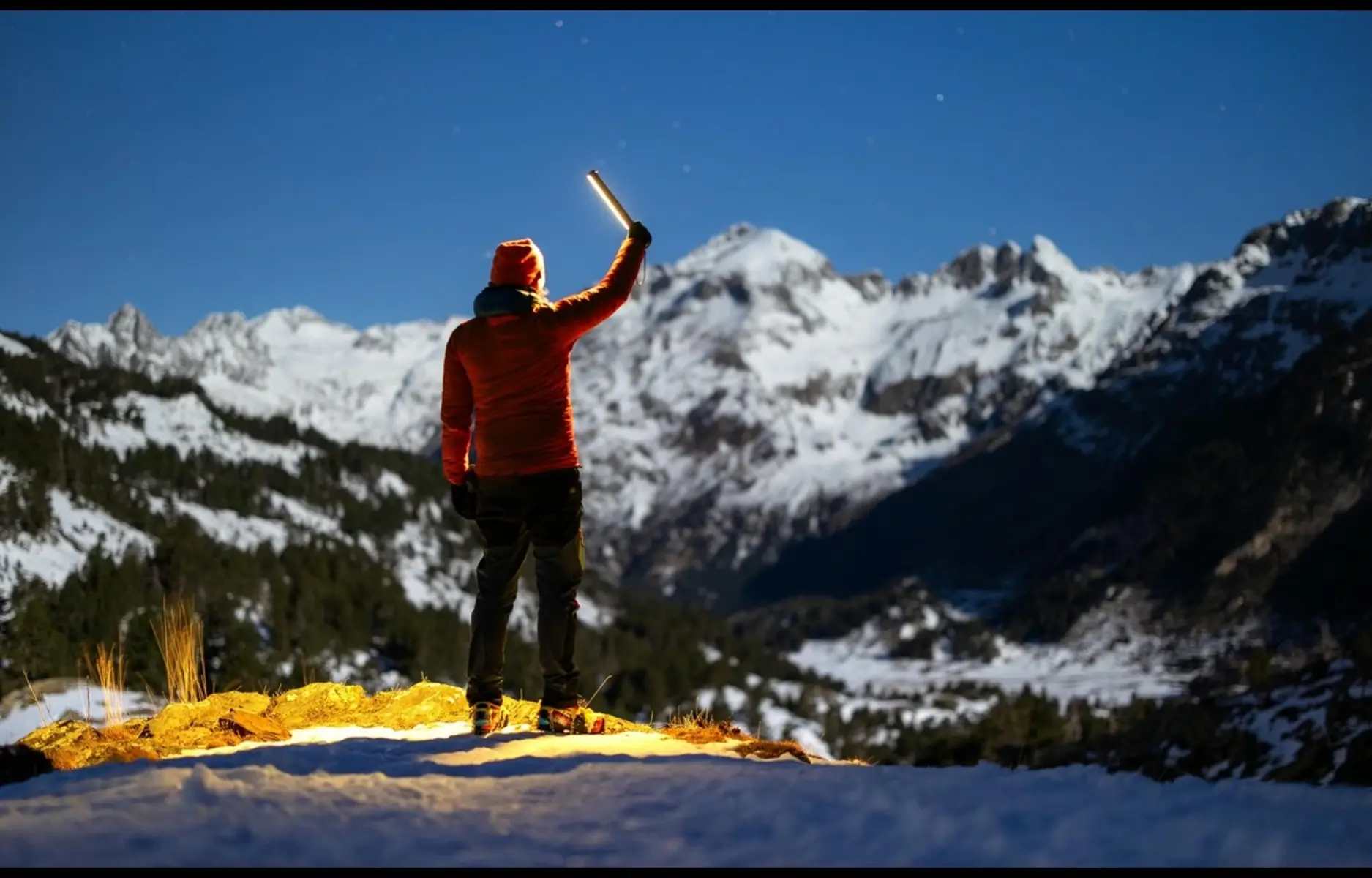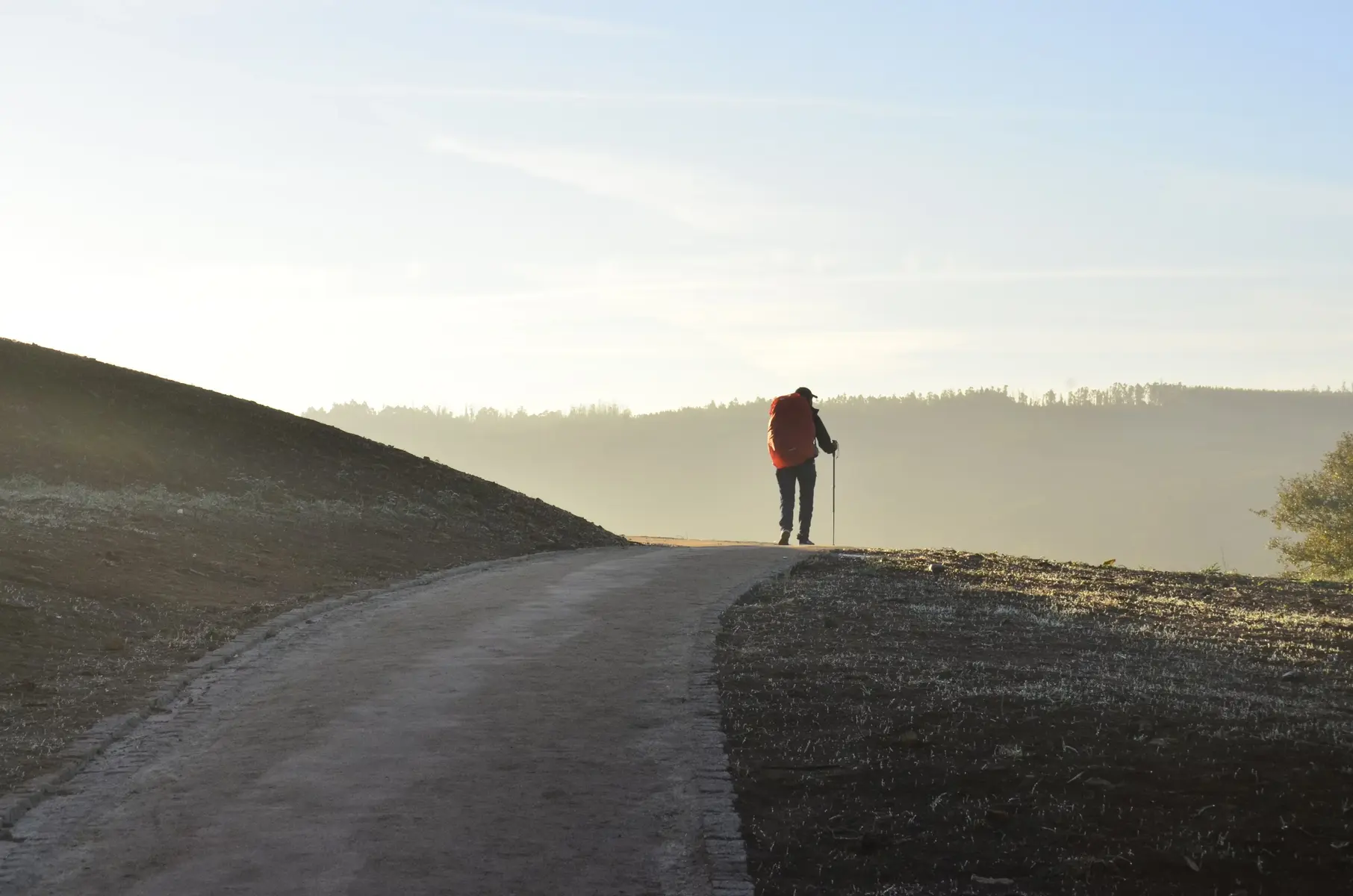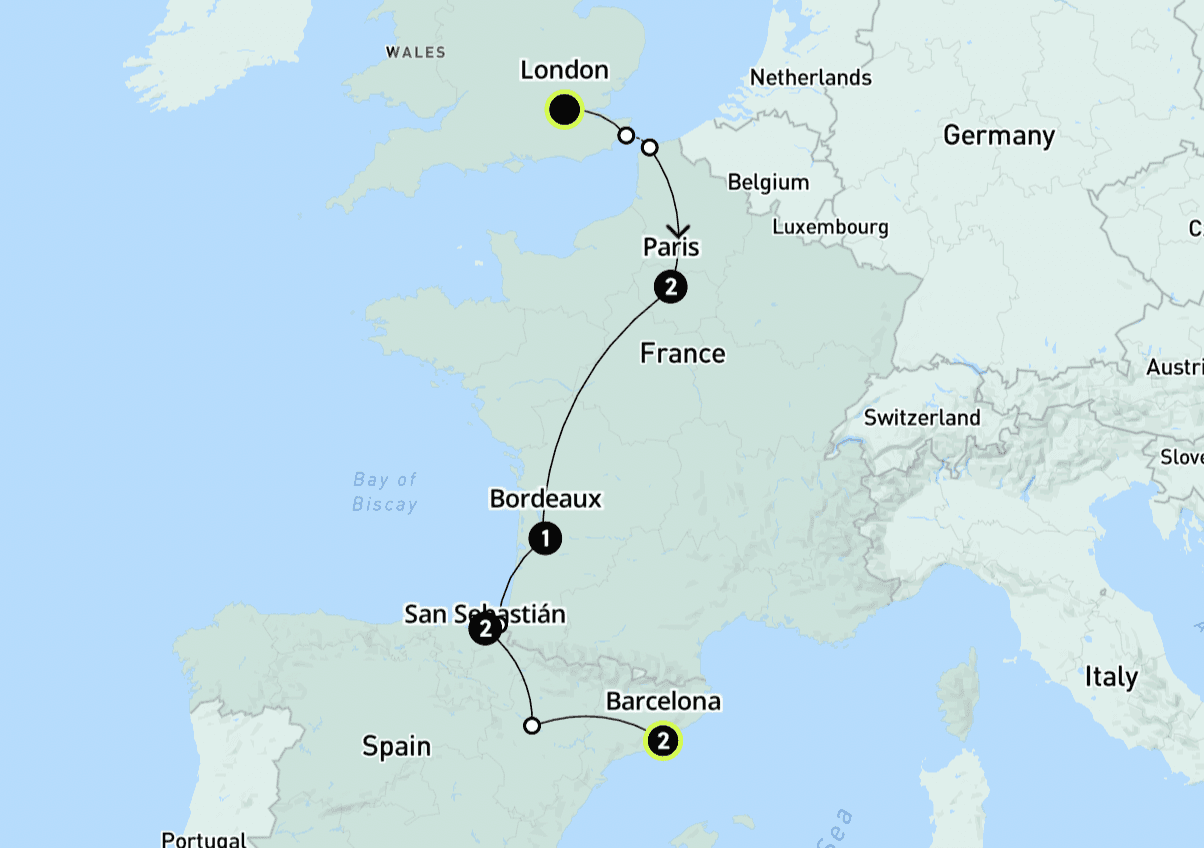Looking for Spain’s most breathtaking hikes? From the legendary Camino de Santiago to hidden gems in the Pyrenees, we’ve rounded up 15 of the best trails for every type of walker. Expect scenic views, historic paths, and untouched nature. Ready to lace up your boots? Let’s explore!

Spain isn’t just about sun, beaches, and tapas—it's also home to some of the most breathtaking hiking trails in Europe. Whether you're after rugged mountain peaks, scenic coastal paths, or historic pilgrimage routes, Spain has it all. From the legendary Camino de Santiago to the jaw-dropping Caminito del Rey, the diversity of trails makes Spain a dream destination for walkers of all levels.
Why This List?
With hundreds of incredible trails to choose from, it can be overwhelming to find the perfect one for your adventure. That’s why we’ve curated this list of 15 of the best hikes in Spain—each offering spectacular scenery, a unique experience, and an unforgettable journey.
What You’ll Find in This Guide
Epic mountain trails in the Pyrenees and Sierra Nevada
Scenic coastal walks along the Mediterranean and Atlantic
Historic routes like the Camino de Santiago
Hidden gems for those who prefer off-the-beaten-path adventures
Essential tips to make your hike safe and enjoyable
Ready to Explore?
Whether you're an experienced trekker or a casual walker, these trails will leave you in awe. Grab your hiking boots, pack your essentials, and let’s dive into Spain’s most spectacular hiking trails! 🚶♂️🏔️
Among Spain's diverse hiking routes, the Camino de Santiago stands out as a historic pilgrimage that attracts adventurers from around the world.
1. Cares Gorge Trail, Picos de Europa
Often called "The Divine Gorge," the Cares Gorge Trail (Ruta del Cares) is one of Spain’s most iconic hikes, cutting through the dramatic limestone cliffs of the Picos de Europa National Park. This spectacular canyon hike follows a narrow path carved into the rock, offering breathtaking views of the river far below.
Trail Details:
Length: 12 km (one way)
Difficulty: Moderate
Time Required: ~3–4 hours one way
Best Time to Visit: Late spring to early autumn
Scenery & Highlights
Towering limestone cliffs and crystal-clear turquoise waters below
A series of tunnels and bridges carved into the rock
Dramatic vertical drops along the path (not for the faint-hearted!)
The trail starts in Posada de Valdeón (León) or Poncebos (Asturias)
Tips & Things to Know
✅ Best Direction: Start in Caín for a more scenic descent
✅ Footwear: Sturdy hiking shoes are a must (rocky paths)
✅ Crowds: Arrive early to avoid peak-hour traffic on the narrow path
✅ Transport: Taxi services available for return journey if you don’t want to hike back
Why You Should Hike This Trail
If you’re looking for one of the most visually striking hikes in Spain, the Cares Gorge Trail should be at the top of your list. It’s accessible, stunningly beautiful, and a must-do for nature lovers.
After your hike, satisfy your appetite with recommendations from our Ultimate Guide to the Best Food in Madrid (2025 Edition).
2. Camino de Santiago (The French Way)
Often called “The Way of St. James,” the Camino de Santiago is Spain’s most famous pilgrimage route, attracting thousands of hikers from around the world. The French Way (Camino Francés) is the most popular path, stretching 800 km across northern Spain, passing through charming villages, rolling countryside, and historic cities before ending at the majestic Santiago de Compostela Cathedral.
Trail Details:
Length: ~800 km (can be done in sections)
Difficulty: Moderate to challenging (depends on the section)
Time Required: 4–6 weeks for the full route (or shorter sections)
Best Time to Visit: April–June, September–October (avoid summer crowds)
Scenery & Highlights
Medieval towns and cathedrals in Pamplona, León, and Burgos
Diverse landscapes from the Pyrenees to Galicia’s green hills
Pilgrim camaraderie—connect with hikers from around the world
Incredible food stops: pintxos in the Basque Country, tapas in León, Galician seafood
Tips & Things to Know
✅ Can’t do the full route? Start from Sarria (the last 100 km) to qualify for the pilgrim’s certificate
✅ Pilgrim Passport (Credential): Needed for access to albergues (hostels) and the certificate
✅ Accommodation: Budget-friendly albergues along the way
✅ Pack light: You’ll be carrying your backpack for weeks
Why You Should Hike This Trail
Whether you seek spiritual reflection, cultural immersion, or a bucket-list trek, the Camino de Santiago is a life-changing experience. Even if you can’t commit to the full journey, walking part of it is an unforgettable adventure.
3. Caminito del Rey, Andalusia
Once known as "the world's most dangerous hike," the Caminito del Rey is now a safe yet thrilling walk along narrow wooden pathways suspended high above the El Chorro Gorge. This jaw-dropping trail offers dramatic cliffside views, dizzying heights, and an adrenaline rush like no other.
Trail Details:
Length: 7.7 km
Difficulty: Moderate (exposed walkways, but not strenuous)
Time Required: ~3–4 hours
Best Time to Visit: Spring and autumn (avoid summer heat)
Scenery & Highlights
Suspended walkways clinging to 100m-high cliffs
Epic views of the El Chorro Gorge and turquoise river below
Glass-bottom balcony for the ultimate panoramic shot
Historic engineering marvel—originally built for hydroelectric workers
Tips & Things to Know
✅ Book in advance: Entry is limited, and tickets sell out fast
✅ Safety first: Helmets are required and provided on-site
✅ No turning back: The route is one-way from Ardales to El Chorro
✅ Best time to go: Mornings offer cooler temperatures and fewer crowds
Why You Should Hike This Trail
If you love thrill-seeking adventures, the Caminito del Rey is an unmissable hike. Its breathtaking scenery, rich history, and adrenaline-pumping pathways make it one of Spain’s most iconic trails.
4. Picos de Europa Mountain Hikes, Asturias & Cantabria
Often overshadowed by the Pyrenees, the Picos de Europa mountain range is one of Spain’s best-kept hiking secrets. With rugged limestone peaks, deep gorges, and lush valleys, this dramatic landscape offers some of the most breathtaking hikes in Spain.
Trail Details:
Length: Varies (day hikes to multi-day treks)
Difficulty: Moderate to challenging
Time Required: 2–8 hours (depending on the route)
Best Time to Visit: Late spring to early autumn
Scenery & Highlights
Towering limestone peaks and green valleys
The famous Naranjo de Bulnes (Picu Urriellu)—a climber’s paradise
Diverse wildlife—golden eagles, chamois, and griffon vultures
Charming mountain villages like Bulnes and Sotres
Tips & Things to Know
✅ Best hike for beginners: Lagos de Covadonga—a scenic alpine lake walk
✅ Challenging trek: Ruta del Cares—a stunning gorge hike (covered in Trail #1)
✅ Weather alert: Conditions can change quickly—bring layers
✅ Local cuisine: Try fabada asturiana (hearty bean stew) after your hike
Why You Should Hike This Trail
If you're looking for untouched nature, dramatic peaks, and authentic mountain culture, the Picos de Europa is a hiker’s paradise. Its sheer beauty and variety of trails make it a must-visit for outdoor lovers.
5. Montserrat Mountain Trails, Catalonia
Nestled just an hour from Barcelona, Montserrat Mountain is famous for its otherworldly rock formations, religious significance, and panoramic views. The network of hiking trails here allows you to explore sacred sites, caves, and towering peaks, making it one of the most unique hikes in Spain.
Trail Details:
Length: Varies (short walks to 10+ km routes)
Difficulty: Easy to moderate
Time Required: 1–5 hours (depending on the trail)
Best Time to Visit: Spring and autumn (avoid peak summer heat)
Scenery & Highlights
Sant Jeroni Peak (1,236m)—highest point in Montserrat with stunning views
Santa Maria de Montserrat Monastery, a famous pilgrimage site
Unusual rock formations, including the "Elephant" and "Cavall Bernat"
Cable car or funicular options to shorten the hike
Tips & Things to Know
✅ Best route for views: Sant Jeroni via Sant Joan Funicular (moderate, 3–4 hours)
✅ Spiritual connection: The monastery houses the revered Black Madonna
✅ Getting there: Train from Barcelona + cable car or rack railway
✅ Hiking gear: Bring good shoes, as trails can be rocky and steep
Why You Should Hike This Trail
With its stunning landscapes, cultural significance, and accessible location, Montserrat is a must-visit for anyone wanting to combine hiking with history and spirituality.
After exploring the scenic trails, unwind at one of the best beaches in Catalonia to complete your adventure.
6. Pico Sobarcal Hiking Route, Pyrenees
Tucked away in the Spanish Pyrenees, Pico Sobarcal offers a thrilling ascent with panoramic views over the Spanish-French border. This lesser-known peak provides an authentic mountain adventure with rocky ridges, alpine meadows, and breathtaking landscapes—perfect for experienced hikers.
Trail Details:
Length: ~12 km round trip
Difficulty: Challenging (steep ascent, some scrambling)
Time Required: ~6–7 hours
Best Time to Visit: Late spring to early autumn
Scenery & Highlights
360° views of the Pyrenees from the summit
Remote alpine landscapes, away from the crowds
Exciting scrambling sections near the top
Charming mountain huts along the route
Tips & Things to Know
✅ Experience required: Suitable for experienced hikers with good fitness
✅ Weather warning: Conditions can change rapidly—check forecasts
✅ Gear up: Bring trekking poles and sturdy hiking boots
✅ Start early: Best to summit before midday for clear views
Why You Should Hike This Trail
If you’re looking for a rewarding challenge in the Pyrenees, Pico Sobarcal is a hidden gem offering stunning mountain views and a true sense of adventure.
Want to avoid the crowds? Discover Spain’s best hassle-free spots for a stress-free getaway.
7. Camí dels Bons Homes (Path of the Good Men), Catalonia
The Camí dels Bons Homes is a historic long-distance trail that follows the escape route of the Cathars, a persecuted religious group in the 13th century. Stretching from Catalonia to France, this trail offers a blend of history, stunning landscapes, and medieval ruins, making it one of Spain’s most unique multi-day hikes.
Trail Details:
Length: ~189 km (can be done in sections)
Difficulty: Moderate
Time Required: 7–10 days for the full route (or shorter sections)
Best Time to Visit: May–October
Scenery & Highlights
Rolling hills, dense forests, and high mountain passes
Medieval castles and ruins, including Montségur in France
Quiet, remote paths, perfect for nature lovers
Cross-border trekking, starting in Berga (Spain) and ending in Montségur (France)
Tips & Things to Know
✅ Not just one route: Multiple starting points available
✅ Best short section: Berga to Gósol (2–3 days)
✅ Accommodation: Small guesthouses, hostels, and rural inns
✅ Navigation: Well-marked, but a map or GPS is recommended
Why You Should Hike This Trail
For hikers who love history, nature, and long-distance treks, the Camí dels Bons Homes is a unique journey through medieval landscapes and legends.
8. Mulhacén Peak Ascent, Sierra Nevada
Standing at 3,479 meters, Mulhacén is the highest peak in mainland Spain. Located in the Sierra Nevada National Park, this hike offers stunning alpine scenery, dramatic ridges, and panoramic views that stretch to the Mediterranean. Despite its height, the trail is non-technical, making it an achievable goal for many hikers.
Trail Details:
Length: ~14 km (round trip from Hoya del Portillo)
Difficulty: Moderate to challenging
Time Required: ~6–8 hours
Best Time to Visit: June–October (avoid winter snow)
Scenery & Highlights
Unparalleled 360° views from the summit
Glacial valleys and rugged alpine terrain
Possible sightings of Spanish ibex and golden eagles
One of the most rewarding hikes in Spain
Tips & Things to Know
✅ Best route: From Hoya del Portillo for a gradual ascent
✅ Altitude effects: Take breaks to acclimatize
✅ No water sources: Bring at least 2–3 liters of water
✅ Alternative: Use the Capileira bus service to shorten the climb
Why You Should Hike This Trail
If you want to summit the highest peak in mainland Spain without technical climbing, Mulhacén is an unmissable trek that rewards hikers with jaw-dropping views and a true sense of achievement.
9. Las Cañadas del Teide National Park Hikes, Tenerife
Set in a Mars-like volcanic landscape, Las Cañadas del Teide National Park is home to Spain’s highest peak, Mount Teide (3,715m), and offers some of the most unique hiking experiences in the country. Whether you’re tackling the summit trail or exploring the lava-sculpted valleys, this park is a paradise for outdoor enthusiasts.
Trail Details:
Length: Varies (short walks to 10+ km routes)
Difficulty: Easy to challenging
Time Required: 1–6 hours (depending on the trail)
Best Time to Visit: Year-round, but avoid midday summer heat
Scenery & Highlights
Dramatic volcanic landscapes, craters, and lava fields
Stunning sunrise and sunset views from the summit of Teide
Rare flora, including the towering red Tajinaste flower (in spring)
Cable car option to shorten the ascent to the peak
Tips & Things to Know
✅ Teide summit permit: Required (book in advance) unless using the cable car
✅ Best short hike: Roques de García Trail (3.5 km loop, surreal rock formations)
✅ Altitude warning: The summit is over 3,700m—watch for signs of altitude sickness
✅ Night hike option: Stargazing is incredible due to low light pollution
Why You Should Hike This Trail
If you’re looking for a hike that feels like stepping onto another planet, Las Cañadas del Teide is one of Spain’s most extraordinary trekking destinations. Whether you aim for the summit or explore its rugged trails, this landscape is unforgettable.
For an in-depth personal account of this route, check out our 5 Days on El Camino del Norte: A Christmas Pilgrimage
10. Camino de Ronda (Costa Brava Coastal Path)
The Camino de Ronda is a stunning coastal hiking route that follows the rugged cliffs and golden beaches of Costa Brava. Originally used by fishermen and smugglers, this trail now offers hikers a mix of secluded coves, turquoise waters, and charming seaside villages.
Trail Details:
Length: ~220 km (can be done in sections)
Difficulty: Easy to moderate
Time Required: Multi-day trek or shorter day hikes
Best Time to Visit: Spring and autumn (avoid peak summer heat)
Scenery & Highlights
Crystal-clear Mediterranean waters and hidden beaches
Whitewashed fishing villages like Cadaqués and Calella de Palafrugell
Dramatic cliffs and pine-covered coastal paths
Snorkeling and swimming stops along the way
Tips & Things to Know
✅ Best short hike: Calella de Palafrugell to Llafranc (5 km)—perfect for a day trip
✅ Beach stops: Pack a swimsuit for hidden coves along the trail
✅ Easy access: Sections are well-connected by public transport
✅ Stay overnight: Charming seaside hotels make multi-day hikes a treat
Why You Should Hike This Trail
For those who love coastal scenery, charming villages, and Mediterranean vibes, the Camino de Ronda is one of Spain’s most beautiful seaside trails—perfect for a relaxed yet scenic hike.
11. Camí de Rodes, Catalonia
The Camí de Rodes is a hidden gem in Catalonia’s Cap de Creus Natural Park, offering breathtaking views of the Mediterranean, rolling hills, and ancient ruins. This scenic coastal and mountain trail takes hikers through a diverse landscape of rocky cliffs, historical sites, and wild nature, making it an unforgettable trek.
Trail Details:
Length: ~16 km round trip
Difficulty: Moderate
Time Required: ~5–6 hours
Best Time to Visit: Spring and autumn
Scenery & Highlights
Panoramic coastal views of the Costa Brava
Sant Pere de Rodes Monastery, an impressive 9th-century landmark
Rolling hills, rugged cliffs, and ancient terraces
Wild, untouched landscapes with few crowds
Tips & Things to Know
✅ Best starting point: Hike from El Port de la Selva for the most scenic ascent
✅ Historic sites: Visit the monastery ruins for incredible views and history
✅ Weather warning: Can get very windy, so pack layers
✅ Photography paradise: Early morning and sunset hikes offer amazing light
Why You Should Hike This Trail
If you love a mix of history, coastal beauty, and mountain trails, the Camí de Rodes is a spectacular hike that offers stunning views and a peaceful escape.
12. Doñana National Park Walking Routes, Andalusia
Located in southern Spain, Doñana National Park is one of Europe’s most important wetlands, offering hikers a unique experience through sand dunes, marshlands, and pine forests. This UNESCO World Heritage Site is a paradise for birdwatchers, nature lovers, and those seeking a peaceful escape into Spain’s wild landscapes.
Trail Details:
Length: Various trails (short walks to 15+ km routes)
Difficulty: Easy to moderate
Time Required: 1–5 hours
Best Time to Visit: Spring and autumn (avoid summer heat)
Scenery & Highlights
Expansive sand dunes and untouched beaches
Diverse wildlife, including Iberian lynx, flamingos, and wild horses
Lush pine forests and vast marshlands
Historic trails once used by shepherds and travelers
Tips & Things to Know
✅ Best short walk: El Acebuche Lagoon Trail (3 km loop)—perfect for wildlife spotting
✅ Birdwatching paradise: Bring binoculars for flamingos, herons, and eagles
✅ Access restrictions: Some areas require guided tours to protect the ecosystem
✅ Getting there: The park is best accessed from Matalascañas or El Rocío
Why You Should Hike This Trail
If you’re looking for a gentle but unforgettable hike in one of Europe’s most important natural reserves, Doñana National Park is a must-visit for nature enthusiasts and wildlife lovers alike.
After exploring Spain's scenic trails, reward yourself with authentic Spanish starters to complete your cultural journey.
13. Sierra de Guadarrama Hiking Trails, Madrid & Castile-León
Just an hour from Madrid, Sierra de Guadarrama National Park is a hiking paradise, offering dense pine forests, dramatic peaks, and stunning viewpoints. With well-marked trails and diverse landscapes, it’s a perfect escape for city dwellers and adventure seekers alike.
Trail Details:
Length: Varies (day hikes from 5–20 km)
Difficulty: Easy to challenging
Time Required: 2–7 hours (depending on the route)
Best Time to Visit: Spring, summer, and autumn
Scenery & Highlights
Majestic mountain peaks, including Peñalara (2,428m)
Glacial lakes, waterfalls, and alpine meadows
Breathtaking viewpoints like La Pedriza’s granite formations
Rich wildlife, including deer, ibex, and golden eagles
Tips & Things to Know
✅ Best beginner hike: Laguna Grande de Peñalara (5 km round trip)
✅ Best challenging trek: La Pedriza circuit (15 km loop with rock scrambling)
✅ Easily accessible: Trains from Madrid make it a great day-trip option
✅ Weather warning: Winter hikes require crampons and warm gear
Why You Should Hike This Trail
If you’re looking for mountain trails near Madrid, Sierra de Guadarrama is one of Spain’s best national parks, offering scenic, accessible, and diverse hiking routes for all levels.
14. GR11 Pyrenees Traverse
The GR11 is Spain’s most legendary long-distance trail, spanning over 800 km across the Spanish Pyrenees, from the Atlantic Ocean to the Mediterranean Sea. This challenging but breathtaking hike takes adventurers through remote valleys, alpine lakes, and towering peaks, offering an unforgettable multi-week trekking experience.
Trail Details:
Length: ~820 km (can be done in sections)
Difficulty: Challenging
Time Required: 45–60 days for the full trek (or shorter sections)
Best Time to Visit: June–September
Scenery & Highlights
Dramatic mountain passes and high-altitude trails
Crystal-clear alpine lakes and lush meadows
Spectacular wildlife, including marmots and bearded vultures
Charming refugios (mountain huts) for overnight stays
Tips & Things to Know
✅ Not for beginners: Requires good fitness and experience
✅ Best short section: Ordesa Valley to Benasque (4–6 days)—one of the most scenic parts
✅ Pack light but smart: Essential gear includes a tent, stove, and warm layers
✅ Water sources: Streams are common, but a water filter is recommended
Why You Should Hike This Trail
For serious trekkers, the GR11 is Spain’s ultimate hiking adventure. Whether you tackle the full trail or just a section, this high-altitude journey through the Pyrenees is an unforgettable experience for mountain lovers.
15. La Torrecilla Summit Hike, Sierra de las Nieves
Nestled in the Sierra de las Nieves Natural Park, La Torrecilla (1,919m) is the highest peak in western Andalusia. This challenging yet rewarding hike offers stunning views of the Mediterranean, dramatic karst landscapes, and a peaceful escape from the crowds of nearby Málaga and Marbella.
Trail Details:
Length: ~18 km round trip
Difficulty: Moderate to challenging
Time Required: ~6–7 hours
Best Time to Visit: Autumn to spring (avoid summer heat)
Scenery & Highlights
Spectacular summit views, with glimpses of Africa on clear days
Diverse landscapes, from pine forests to rocky highlands
Ancient Spanish fir trees (Pinsapos) unique to the region
Wildlife spotting, including ibex and golden eagles
Tips & Things to Know
✅ Best starting point: Hike from Quejigales Recreational Area
✅ Weather warning: Cold winds at the summit—bring layers
✅ No water sources: Carry enough water for the entire hike
✅ Navigation: Well-marked but a GPS or offline map is recommended
Why You Should Hike This Trail
For those looking for a challenging yet achievable summit hike in southern Spain, La Torrecilla is an excellent choice. With breathtaking views and diverse terrain, it’s one of Andalusia’s best-kept hiking secrets.
Additional Tips for Hiking in Spain
Spain offers some of the most diverse hiking experiences in Europe, from high-altitude peaks to coastal walks and historic trails. Whether you're trekking through the Pyrenees, Sierra Nevada, or along the Camino de Santiago, these essential tips will help you make the most of your adventure.
1. Best Time to Go Hiking in Spain
✅ Spring (March–May): Ideal for pleasant temperatures and blooming landscapes
✅ Autumn (September–November): Cooler weather, perfect for mountain hikes and long-distance trails
✅ Summer (June–August): Best for high-altitude hikes (Pyrenees, Picos de Europa) but avoid midday heat in lower elevations
✅ Winter (December–February): Sierra Nevada and Pyrenees offer snow hiking and mountaineering—bring proper gear
📌 Pro Tip: Avoid July and August for lowland hikes—temperatures can soar above 35°C in places like Andalusia and central Spain.
2. Essential Hiking Gear for Spain
Packing the right gear is crucial for a safe and comfortable hike. Essentials include:
🎒 Daypack: Lightweight, 20–30L with hydration bladder space
🥾 Hiking Boots/Shoes: Waterproof and broken-in before your trip
🥤 Water Supply: Carry 2–3 liters, especially for remote hikes
🧴 Sun Protection: Sunscreen, hat, sunglasses (Spanish sun is intense!)
🗺️ Navigation: Offline GPS maps (Maps.me, AllTrails, Wikiloc)
🦟 Bug Spray: Especially for wetlands (Doñana, Pyrenees)
🎽 Layered Clothing: Lightweight, moisture-wicking, and a windproof jacket for higher altitudes
📌 Pro Tip: Many Spanish trails don’t have water sources, so plan ahead!
3. How to Get to the Hiking Trails
🚆 By Train: Many hikes near cities (Montserrat, Sierra de Guadarrama) are easily accessible by RENFE trains
🚍 By Bus: ALSA & Avanza buses serve national parks and remote areas
🚗 By Car: Best for flexibility—rent a car if you’re visiting multiple hiking spots
🚕 Taxi & Shuttle Services: Available for trails like Cares Gorge & Caminito del Rey
📌 Pro Tip: For multi-day hikes, check public transport back to your starting point before you begin!
4. Hiking Etiquette & Environmental Responsibility
🇪🇸 Spain’s national parks and hiking areas are well-preserved, and hikers are expected to follow Leave No Trace principles:
♻️ Take all trash with you—no bins on most trails
🌿 Stay on marked paths to protect fragile ecosystems
🔥 No campfires in protected areas—risk of wildfires
🤫 Respect wildlife & locals—keep noise levels low
🛑 Follow regulations—some hikes (Teide, Doñana) require permits
📌 Pro Tip: In summer, fire restrictions are in place in many national parks—check before you go!
5. Recommended Hiking Apps & Resources
📲 Best Apps for Hiking in Spain
AllTrails & Wikiloc – GPS maps and trail reviews
Maps.me – Offline maps for remote areas
Spanish Meteorological Agency (AEMET) – Weather forecasts
📌 Pro Tip: Always download maps before your hike, as signal is unreliable in remote areas.
Final Thoughts
Whether you're climbing Spain’s highest peaks, exploring scenic coastal paths, or walking historic pilgrimage routes, these tips will help you stay safe, prepared, and make the most of your adventure.
Unforgettable Hikes in Spain You Can’t Miss
Spain is a hiker’s paradise, offering everything from coastal walks and volcanic landscapes to high-altitude mountain treks and historic pilgrimages. Whether you’re looking for a thrilling cliffside path like Caminito del Rey, a long-distance challenge like the GR11, or a peaceful nature walk in Doñana National Park, there’s a perfect trail for every adventurer.
Why You Should Hike in Spain
✅ Diverse landscapes—mountains, forests, deserts, and beaches
✅ Rich cultural experiences—historic towns, monasteries, and ancient pilgrimage routes
✅ Excellent infrastructure—well-marked trails, great transport, and plenty of accommodations
✅ Hikes for all levels—whether you’re a beginner or an experienced trekker, Spain has a trail for you
What’s Next?
🚶♂️ Which hike are you most excited to try? Tell us in the comments!
📸 Hiked in Spain before? Share your experience and photos on social media—tag us!
🔗 Loved this guide? Share it with your hiking buddies and start planning your next adventure!
No matter which trail you choose, Spain’s stunning landscapes and rich history will leave you with unforgettable memories. So, grab your boots, hit the trails, and start exploring! 🌍🏔️☀️
FAQS Travel to Paradiso
Recent Posts



